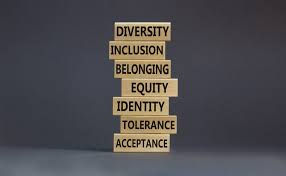
Are you CEO
succession ready?


My CEO Succession Readiness Process
Not having a CEO Succession Plan creates massive risk

Why work with me in CEO Succession Planning?
I have designed, advised, implemented and developed succession planning for over 30 organisations including from an external consulting position and from within as the Chief People Officer. These include CEO succession for ASX top 10, top 20 and top 40 organisations.
A 35-year career offering four capabilities that few people can offer in the market when it comes to assessing the potential of executives.
1) STRATEGY FORMULATION AND ASSESSMENT
The foresight of a Stanford-MBA/Booz-Allen-trained strategist who can
a) Spar with potential candidates as they imagine the unimaginable future and then
b) Produce a strategy that makes the complex to the simple-- and then the simple to compelling
2) IMPLEMENTATION FORMULATION AND ASSESSMENT
The pragmatism of a project manager of world-sized events with four years as head of operational planning for the Sydney Olympics 2000) -- that can assess how well executives can make these strategies into successful implementation
3) LEADERSHIP AND CULTURE ASSESSING AND DEVELOPMENT FOR OVER THREE DECADES
The astute, logical and intuitive judgement to assess and develop executives and their teams
across at least 20 industries for the last three decades -- and the experience of creating systemic talent and culture programs inside as a Chief People Officer
4) PSYCHOLOGICAL INSIGHT to EXECUTIVES as an ACCREDITED PSYCHOTHERAPIST
The psychological insight of mental, emotional, spiritual and physical wellness as an accredited psychotherapist for over a decade, counselling executives on issues such as depression, addiction, work overload, relationship challenges, career transition, meaning
The risks you face if you are not CEO "succession ready"
If you are a CEO or in the Executive Team, not having a succession plan for yourself is a significant risk to the organisation that creates serious harm to the organisation:

(1) Business Growth
-
A survey by PwC found that companies with a robust succession plan experienced 1.5 times higher revenue growth compared to those without one (PwC, "2016 Global CEO Survey").

(2) Business valuation
-
report by McKinsey & Company found that companies with strong leadership practices have an average enterprise value 20% higher than those with weaker practices (McKinsey & Company, "Valuing Leadership.")

(3) Risk Management
-
Deloitte revealed that 36% of business leaders view succession as an "urgent" or "important" priority, yet only 14% believe their organisations do it well (Deloitte, "Global Huan Capital Trends 2016").

(4) Strategy Alignment
-
Research by Harvard Business Review found that companies with aligned leadership and strategy are 2.2 times more likely to achieve above-average financial performance (Harvard Business Review, "Aligning Leadership and Strategy.")

(5) Knowledge Transfer
-
A survey by the Institute for Corporate Productivity (i4cp) shows that organisations with knowledge transfer practices are 4.5 times more likely to outperform their peers in terms of productivity and efficiency (i4cp, "Knowledge and Transfer: The Key to Organisational Resilience and Agility").

(6) Competitive Advantage
-
According to a study by the Corporate Executive Board, companies with strong leadership pipelines are 1.7 times more likely to outperform their peers in terms of financial performance (Corporate Executive Board, "Driving Corporate Performance").

(7) Talent Retention
-
According to LinkedIn's 2020 Workplace Learning Report, 94% of employees would stay at a company longer if it invested in their career development.

(8) Diversity & Inclusion
-
A study by McKinsey & Company showed that companies in the top quartile for gender diversity on executive teams were 25% more likely to have above-average profitability (McKinsey & Company, "Diversity wins: How inclusion matters." )

(1) Strategy and Planning
-
Interview Board, current executive, clients, futurists, industry experts, and analysts, to determine the future context for the position we are planning for
-
Determine the critical capabilities and behaviour to meet this new context
-
Design the assessment process, timelines, communication internally and externally
-
Match with the external search process, guaranteeing independence of search process

(2) Evaluation of Candidates
-
3-5 sessions with each potential executive as we explore themes from growing up, previous careers, current position, and vision of next position and where the future of the corporate lies
-
1 hour with 6-10 people who can share their observations of the executive including the manager, peers, direct reports, clients, suppliers, Board, and even family members if appropriate
-
Psychometrics as directed by the client in consultation with me
-
Draft report of 20 detailed pages that rate each capability, assessed against readiness

(3) Developing during Candidacy
-
Detailed development plan is produced that is specific to each candidate
-
Exposure -- project managing time spent with the Board, external stakeholders
-
Coaching-- taking the lessons learned in the analysis and putting them into practice
-
Expanding the candidate's reality by seeing other counties, companies, industries
-
Testing and retesting their strategic insights and formulation of how they would take the organisation further if they were chosen

(4) Selection and Transition
-
Selection process: advising the Board on the strengths and vulnerabilities of the candidates; facilitating the selection process
-
Strategising on the internal and external communications for the chosen candidate
-
Working with the candidates not chosen to determine their next steps
-
Choreographing the transition from the previous executive to the one chosen, which would include handover dialogues with multiple stakeholders, plans for first 30, 60, 90 days, formulation of strategy, determination of the team, setting up the culture, assessing the talent required to take the organisation forward








